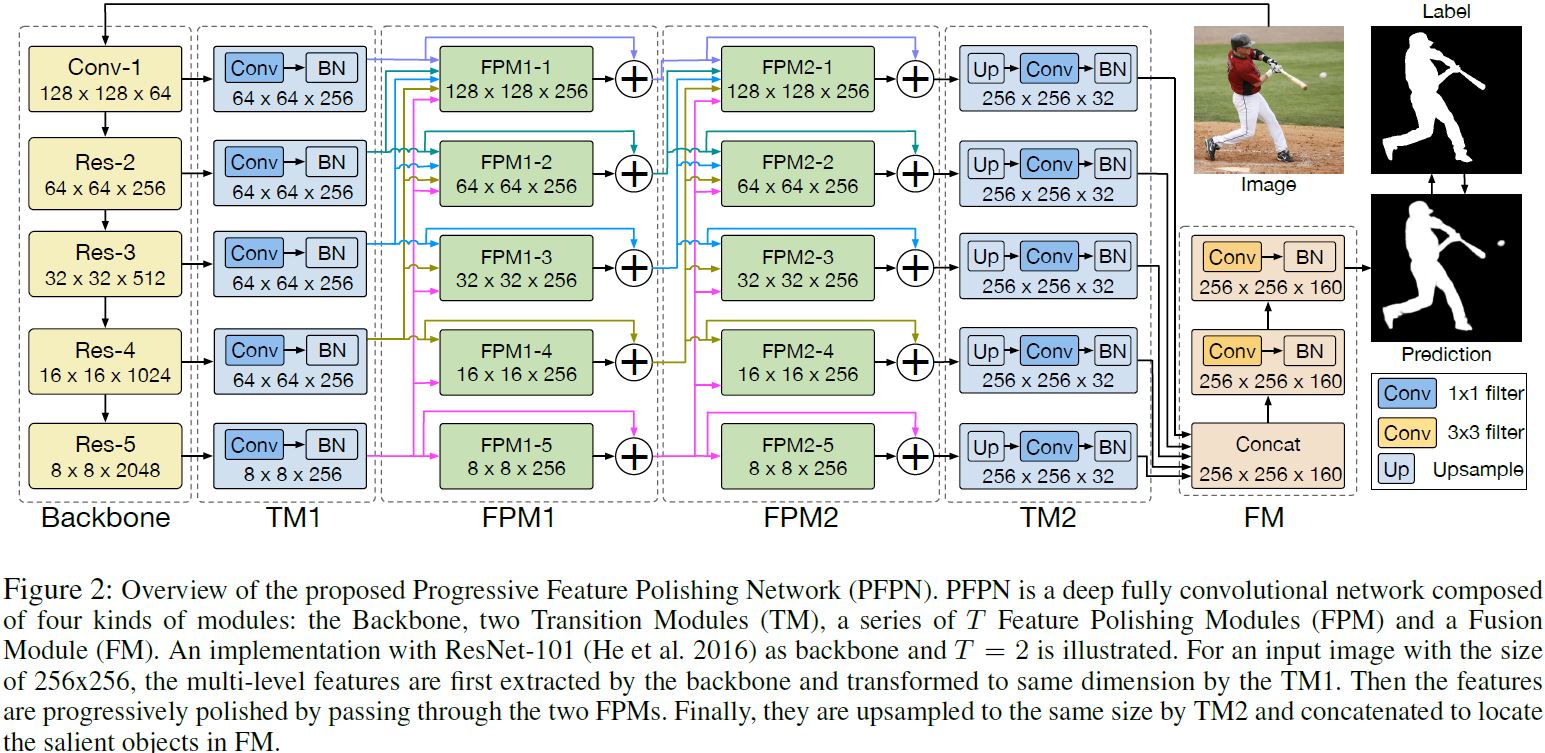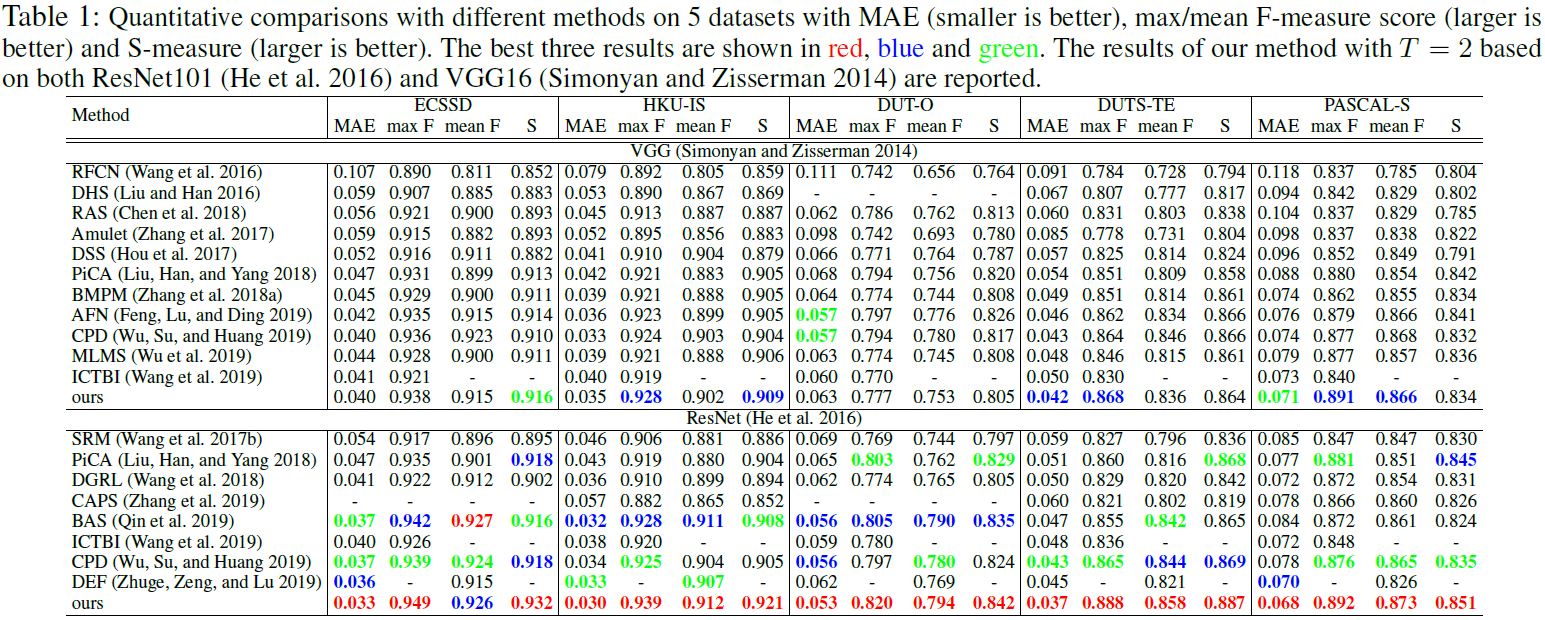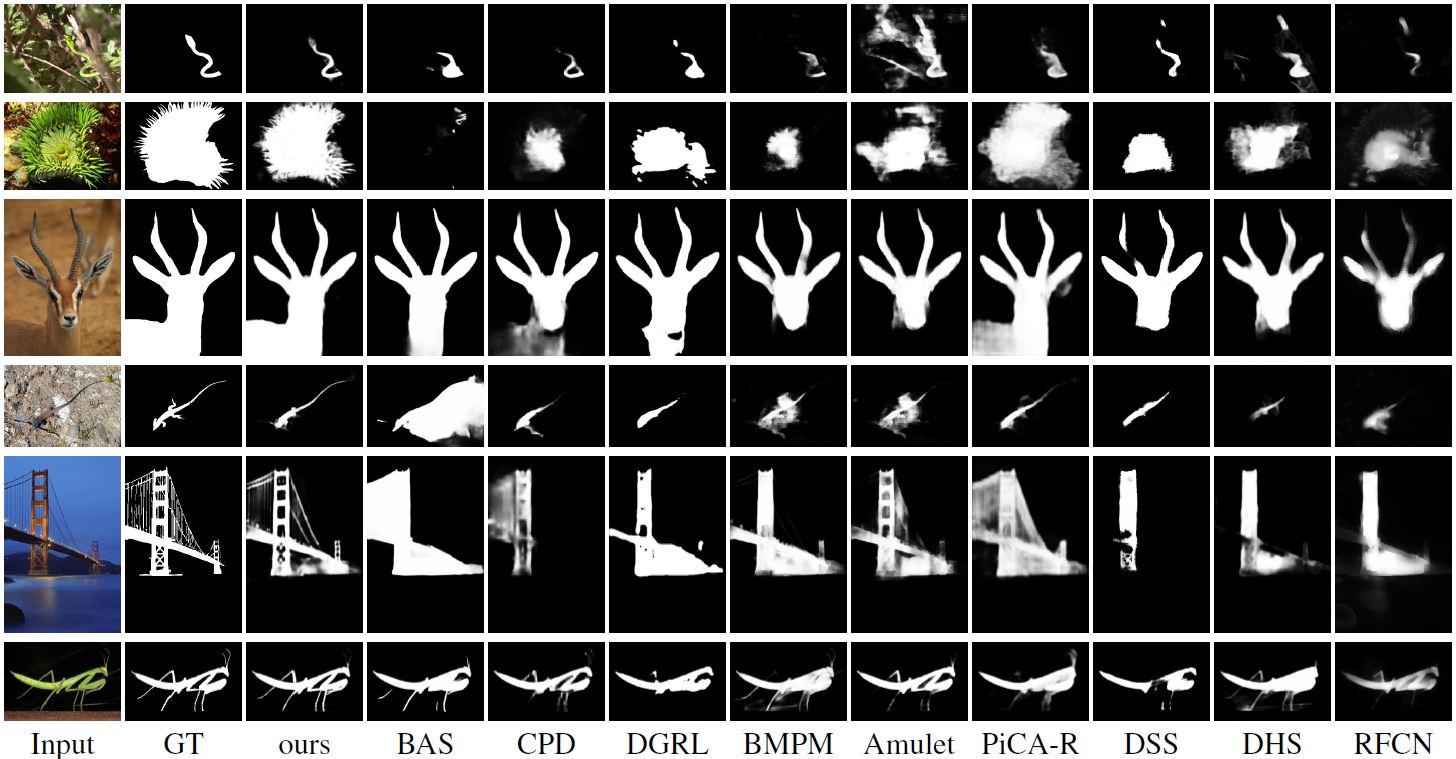- Introduction
- Installation
- [Quick demo](#Quick demo)
- [Prepare data](#Prepare data)
- [Training PFPN](#Training PFPN)
- [Testing PFPN](#Testing PFPN)
- Evaluation
- Experiments
- Citation
This repository is the official implementation of PFPN for salient object detection, which is proposed in Progressive Feature Polishing Network for Salient Object Detection.
The code was tested with CentOS7 with Anaconda environment:
- CUDA 10
- python 3.7.1
- Pytorch 1.0.0
- numpy 1.15.4
- opencv-python 3.4.5
- scikit-image 0.14.1
- tensorboardX 1.6
- tqdm 4.28.1
-
Run the command
sh shells/demo.shto detect default image. To speed up pretrained model downloading, you can download the pretrained PFPN model (Google Drive or Baidu Netdisk) to the local directory (models/pretrained) by yourself. -
To test your own image, please change the parameter of
--image-pathinshells/demo.sh.
-
To make a quick preparation, you can run the command
sh shells/download_data.shto download 5 common datasets: ECSSD, HKU-IS, DUTS, DUT-OMRON, PASCAL-S (Be sure that you have installed unzip and rar). -
You can also prepare your own datasets. First, in
data, you should create a folder$your_own_dataset_name$which includes all your data. And then, record all image and groundtruth paths in$your_own_dataset_name_train.confand$your_own_dataset_name_valid.conf.
-
After preparing data, run the command
sh shells/train.shto start training PFPN. Because of difference of machines, some settings inshells/train.shshould be modified. -
To train our model on your own dataset, modify dataset-dir in
shells/train.sh. Because of difference of machines, some settings inshells/train.shshould be modified.
After modification of shell/test.sh according to your machine, PFPN testing can be run by sh shell/test.sh.
We implement four metrics: MAE(Mean Absolute Error), F-Measure, S-Measure[2] and E-Measure[1].
After preparing data, to make a quick evaluation for PFPN on 5 dataset: ECSSD, HKU-IS, DUTS, DUT-OMRON and PASCAL-S,
you can download predicted saliency maps of PFPN(Google Drive or Baidu Netdisk).
And then create folder res_vis/PFPN in root directory of this project and extract those results to this folder.
The path structure looks like this:
res_vis
├──── PFPN
│ ├──── ECSSD
│ ├──── HKU-IS
│ ├──── DUTS
│ ├──── DUT-OMRON
│ └──── PASCAL-SFinally, run shells/evaluation.sh to start evaluating:
You can use Evaluation in utils/evaluation.py to calculate these four metrics, for example:
saliency_evaluation = SaliencyEvaluation()
saliency_evaluation.clear()
# pred is predicted saliency map, gt is groundtruth
saliency_evaluation.add_one(pred, gt)
# get_evaluation would return mean results of all metrics
MAE, Precision, Recall, F_m, S_m, E_m = saliency_evaluation.get_evaluation()@article{pfpn,
title = {Progressive Feature Polishing Network for Salient Object Detection},
author = {Bo, Wang and Quan, Chen and Min, Zhou and Zhiqiang, Zhang and Xiaogang, Jin and Kun, Gai},
booktitle = {arXiv:1911.05942v1},
year = {2019}
}
[1] Fan D P, Gong C, Cao Y, et al. Enhanced-alignment measure for binary foreground map evaluation[J]. arXiv preprint arXiv:1805.10421, 2018.
[2] Fan D P, Cheng M M, Liu Y, et al. Structure-measure: A new way to evaluate foreground maps[C]. Proceedings of the IEEE international conference on computer vision. 2017: 4548-4557.


